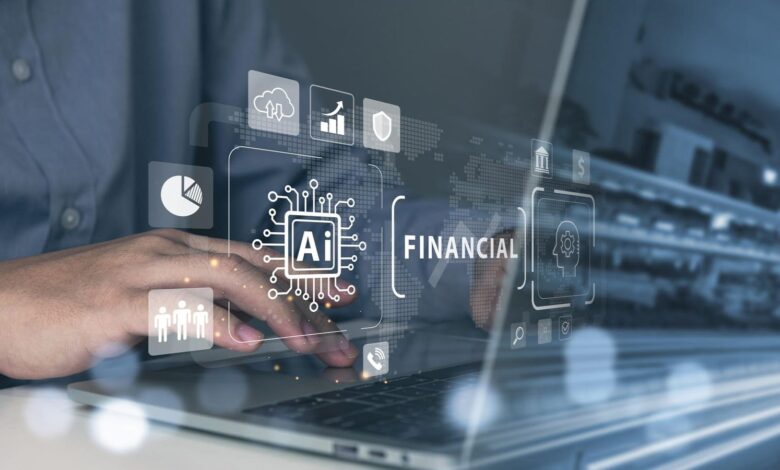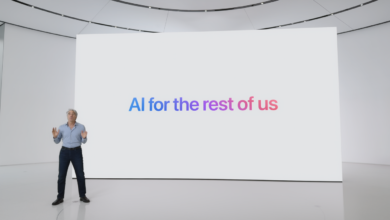Morgan Stanley And The Rise Of AI-Driven Financial Advice

The Future of Banking: Morgan Stanley and the Rise of AI-Driven Financial Advice
Generative AI, the technology made famous by ChatGPT, will profoundly change the landscape of banking operations. According to McKinsey, generative AI could add between $200 and $340 billion in value for banks per year (9–15 percent of operating profits). In this article, we’ll see how banking giant Morgan Stanley has begun to harness generative AI – and explore broader use cases for generative AI in banking and finance.
Introducing Morgan Stanley’s New AI Assistant
In 2023, Morgan Stanley launched a new internal AI assistant based on OpenAI’s ChatGPT technology. Called AI @ Morgan Stanley Assistant, the tool is designed to help Morgan Stanley financial advisors and support staff access and digest over 100,000 research reports.
Basically, it’s a custom-made encyclopedia for finance professionals, helping them to answer questions on investment recommendations, general business performance, and even on internal processes (such as how to complete certain applications). Think of it as a sort of “copilot” for Morgan Stanley staff, helping them do their job in a more efficient way. Indeed, generative AI is finding its feet as a copilot tool across all sorts of industries – not just in finance, but also healthcare, software development, teaching, and more.
In a memo to Morgan Stanley staff, co-president Andy Saperstein said the AI assistant would “revolutionize client interactions, bring new efficiencies to advisor practices, and ultimately help free up time to do what you do best: serve your clients.”
Generative AI excels at taking conversational prompts and questions, digesting massive amounts of information, and then coming up with easy-to-understand answers based on what the model has learned. So, it makes sense that Morgan Stanley has chosen to initially deploy generative AI in this way – helping staff save time on research and admin tasks, so they have more time to spend with clients. But it doesn’t stop there; the company has more AI tools in the works, including a tool called Debrief, designed to automatically summarize client meetings and draft follow-up emails.
Broader Use Cases And Possibilities In Banking
Considering generative AI’s ability to create content, analyze data, and even run simulations, it’s pretty easy to imagine how the technology can help financial institutions to make more informed decisions, drive innovation and provide a better service to customers.
One of the obvious uses is in customer service – think banking chatbots that can answer questions and respond to complaints 24/7. Generative AI can also help to onboard new customers in a more efficient way, for example, by using a tool like ChatGPT to help customers fill out forms correctly and answer their questions about switching banks. In other words, generative AI will give rise to a new era of conversational banking that simulates human conversations. More like the way we used to do banking.
Just as with other sectors, personalization is a major use case in banking – for example, personalized tools and advice designed to help customers use their money more wisely. Generative AI can deliver in-depth insights into customer behavior and preferences, and this will help banks create new products and services that are more thoughtful and customized. By simulating how different product and service features meet the needs of individual customers or market segments, generative AI can help banks create highly tailored products and additional services that better serve their customers.
Another major use case is automating many of the behind-the-scenes processes and operations in financial institutions, such as conducting financial analysis and writing content. This may include using generative AI to produce credit decisioning models, generating user-friendly denial explanations when applications are denied, improving fraud detection frameworks by simulating patterns of fraudulent behavior, enhancing asset and portfolio management by simulating asset performance under different market scenarios, and beefing up risk management practices by simulating operational risk scenarios.
So Will Other Banks Get On Board With Generative AI?
They already are. British bank NatWest has collaborated with IBM to enhance the bank’s virtual assistant, Cora. Thanks to generative AI, Cora+ will be able to provide NatWest customers with a wider range of information, all through personalized, conversational interactions.
Square, the financial services platform owned by Block Inc., is embracing generative AI in a really interesting way – using the technology to provide new tools for customer content creation, onboarding, and setup. Among the new features is a Menu Generator tool, which allows restaurants to create a menu in minutes for their website. There’s also a generative AI-powered email feature, which helps businesses create personalized messages for customers. There’s even a website copy generator that can write headlines, copy, and blog posts for business websites. This gives us a taste of how banks could use generative AI to create time-saving new tools and products for their business customers in the future.
Elsewhere, global bank HSBC has reportedly unearthed a “few hundred” use cases for generative AI that could potentially be deployed.
In short, banking companies have been morphing into tech companies for several years now. Generative AI will take this transformation to a whole new level and provide banks with new ways to streamline processes and better serve their customers. Safe to say, any financial institution that doesn’t embrace generative AI risks being left behind.



